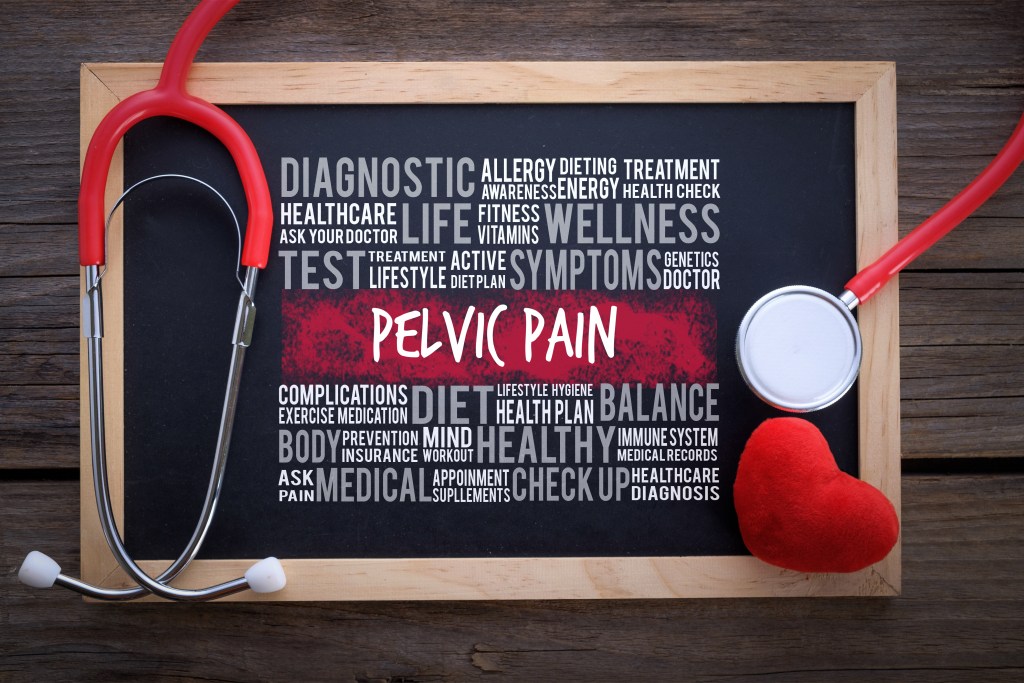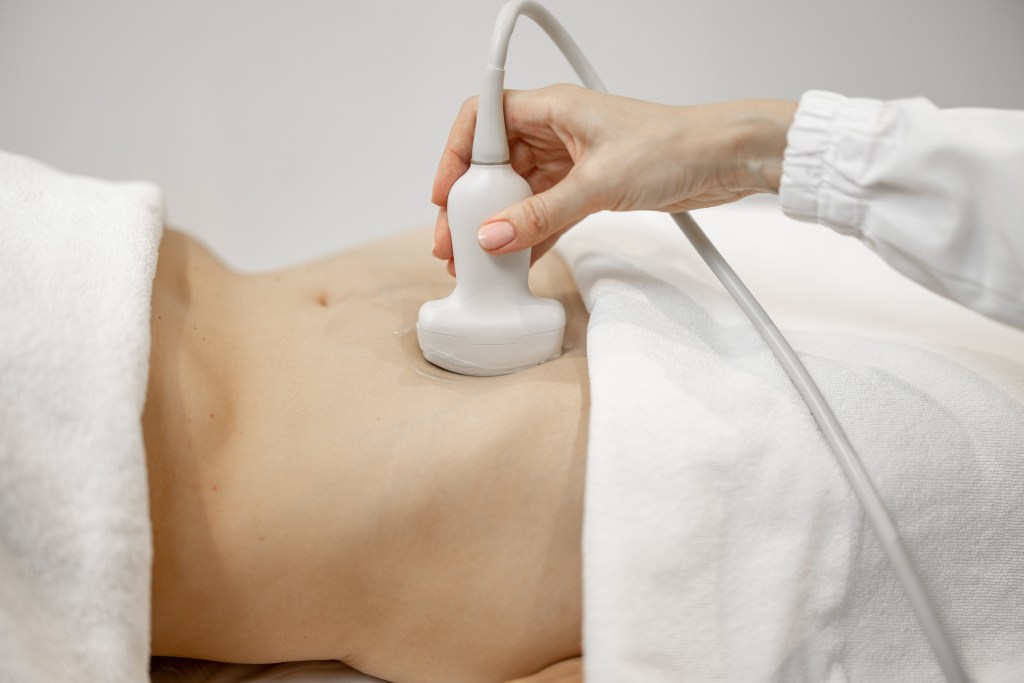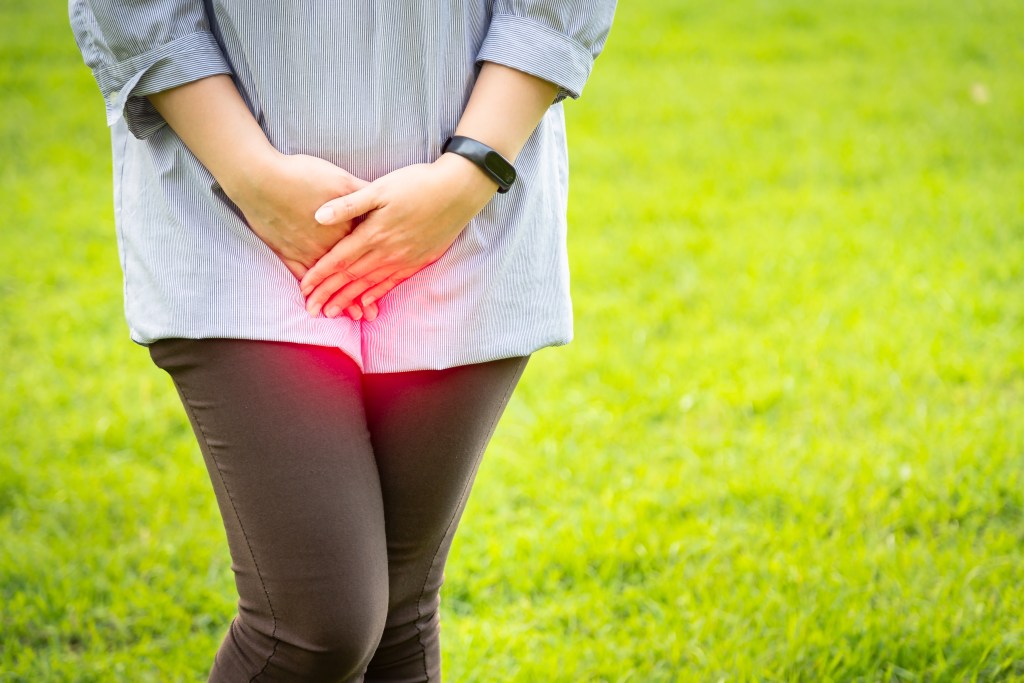Pelvic congestion syndrome (PCS) is a medical condition characterized by chronic pain in the pelvic region, linked to varicose veins in the lower abdomen that restrict normal blood flow.
PCS is more common in women and can be caused by various factors, including hormonal changes, pregnancy, and genetic predisposition.
Let’s look at common causes of PCS and learn what steps you can take to ease symptoms fast.
What is pelvic congestion syndrome (PCS)?
Pelvic Congestion Syndrome (PCS) occurs when veins in the lower abdomen become enlarged, twisted, and varicose, leading to impaired blood flow and pooling in the pelvic region.
These dysfunctional veins cannot drain blood efficiently, increasing pressure on pelvic floor muscles. This often causes chronic pelvic pain, discomfort, and limitations in daily activities such as walking, exercising, or lifting.
While PCS is more commonly diagnosed in women, men can also be affected, typically presenting as varicose veins in the testicular region.
Furthermore, research published in the Journal of Clinical Gastroenterology found that women with irritable bowel syndrome are more likely to report pelvic pain, suggesting an overlap between these two conditions.1
Signs of PCS
While most people with PCS suffer dull abdominal pain and increased pressure in the pelvic region, it can cause a wide range of other symptoms.
These are common PCS syndrome symptoms:
- Chronic pelvic pain
- Dull or aching pain that may be worse on one side of the pelvis
- A feeling of fullness or pressure in the pelvic area
- Pain during intercourse
- Lower back pain
- Pain worsens after long periods of standing or sitting
- Abdominal bloating or swelling
- Dysmenorrhea or painful periods

Causes of PCS
PCS develops as a result of varicose pelvic veins, and it’s thought that several potential causes can contribute to the formation of twisted and engorged blood vessels.
Here are six potential causes of PCS.
1. Hormonal changes
Hormonal fluctuations during the menstrual cycle, pregnancy, and menopause can cause the pelvic veins to dilate and lose muscle tone.
“Women with multiple pregnancies are more likely to develop PCS,” explains Dr. Berg. “It’s thought that high estrogen levels during pregnancy can cause the thinning of vein walls, significantly increasing the risk of varicose pelvic veins.”
2. Genetic predisposition
A genetic predisposition can increase the risk of PCS by weakening vein walls and valves, making individuals more susceptible to varicose veins in the pelvic region.
This inherited weakness impairs blood flow and increases the risk of venous pooling and pressure.
3. Obesity
Obesity appears to increase the risk of developing PCS. It’s believed that excessive body weight increases pelvic pressure, which can result in enlarged pelvic veins and associated discomfort.
4. Pelvic inflammation
Conditions including endometriosis, ovarian cysts, pelvic inflammatory disease, and pelvic infections can cause veins to become inflamed, which is linked to loss of elasticity and blood vessel wall thinning.
5. Pelvic surgery
Procedures such as hysterectomy or prostate removal can cause damage to pelvic veins and increase the risk of PCS.
6. Stress
Research published in the Journal of the Society of Laparoscopic & Robotic Surgeons suggests that chronic stress can cause muscle tension, which can worsen pelvic pain and discomfort.2

How is PCS diagnosed?
PCS can be difficult to diagnose because it’s characterized by symptoms similar to those of other conditions, including endometriosis and irritable bowel syndrome.
Some of the diagnostic procedures to confirm PCS include:
- Physical exam
- Pelvic ultrasound
- Magnetic resonance imaging (MRI)
- Laparoscopy
Depending on the underlying cause, there are several treatment options, including hormonal therapy, physical therapy, surgery, or ovarian vein embolization, a minimally invasive procedure that appears to relieve pain in many women with PCS successfully.

Lifestyle choices that may help PCS
If you have PCS, it’s important to consult your doctor to determine the most effective treatment plan.
In the meantime, certain dietary and lifestyle habits may help reduce pelvic pain and support overall vein health.
Here are four steps you can take for PCS symptom relief.
1. Follow Healthy Keto®
Excess body weight places added pressure on pelvic veins and can worsen symptoms of PCS.
A nutritious ketogenic diet, such as Healthy Keto®, emphasizes whole, nutrient-dense foods that encourage the body to burn stored fat for energy. This aids in sustainable weight loss and reduces strain on the pelvic region.
This meal plan also supports vascular health by providing essential nutrients that strengthen blood vessels and offer anti-inflammatory benefits crucial for managing PCS symptoms.
Additionally, Healthy Keto includes fiber-rich, non-starchy vegetables that help maintain regular bowel movements, thereby minimizing constipation, a common trigger of pelvic pressure and discomfort in PCS.

2. Stay physically active
Regular physical activity helps improve blood circulation and prevents blood from pooling in the pelvic veins, a key contributor to PCS symptoms.
In addition, low-impact exercises such as walking, swimming, and stretching promote healthy vein function, reduce pressure in the lower abdomen, and can help alleviate chronic pelvic pain associated with PCS.
Staying active also supports a healthy weight, further reducing strain on the vascular system.
3. Avoid long periods of standing or sitting
Prolonged periods of sitting or standing can elevate pressure in the pelvic veins, leading to poor circulation and fluid buildup, which may intensify the symptoms of PCS.
4. Abdominal compression support
Wearing abdominal compression garments can help reduce venous pressure by supporting pelvic circulation and minimizing vein dilation.
This added support may ease discomfort and provide symptom relief for those with PCS, especially during prolonged activity or standing.

Key takeaways
Pelvic congestion syndrome (PCS) results from enlarged and bulging pelvic veins that can’t adequately drain blood from the pelvis region, resulting in pelvic pressure, pain, and discomfort.
If you suspect PCS, it’s crucial to consult a healthcare provider, as treatment will depend on the underlying cause and severity of the condition.
However, maintaining a healthy weight, staying physically active with daily movement, and avoiding prolonged sitting or standing can all support pelvic circulation and help reduce PCS-related discomfort.
FAQ
1. What is PCS (pelvic congestion syndrome)?
Pelvic congestion syndrome is a condition in which pelvic veins become varicose. Varicose pelvic veins are enlarged and twisted and can’t properly drain blood away from the pelvic region, which causes pain, swelling, and abdominal discomfort.
2. What causes PCS?
Multiple pregnancies, obesity, and pelvic surgery can cause increased pelvic pressure that causes the thinning of pelvic blood vessel walls.
In addition, hormonal changes and genetic predisposition can contribute to the development of varicose pelvic veins and increase the risk of developing PCS.
3. How do you get rid of pelvic congestion?
The most appropriate treatment option will depend on the exact underlying cause and may include medications like birth control pills, surgery, or ovarian vein embolization.
4. Is pelvic congestion curable?
There isn’t a cure for pelvic congestion. However, a combination of medication, surgery, and the right lifestyle choices can help manage PCS symptoms.
5. How can I reduce inflammation in my pelvic area?
A diet rich in anti-inflammatory nutrients can help reduce pelvic inflammation and support overall healing.
Such a diet minimizes processed foods, added sugars, and refined carbohydrates, while emphasizing healthy fats, nutrient-dense vegetables, organic dairy, and grass-fed meats.
6. Can stress make pelvic congestion syndrome worse?
Yes, stress can worsen symptoms of PCS as it increases muscle tension and inflammation, which can amplify pelvic pain and disrupt normal blood flow.
7. What are the best natural remedies for PCS?
The best natural remedies for PCS include incorporating anti-inflammatory foods and regular low-impact exercise to improve circulation, to help reduce pelvic pain, and improve vascular function.







